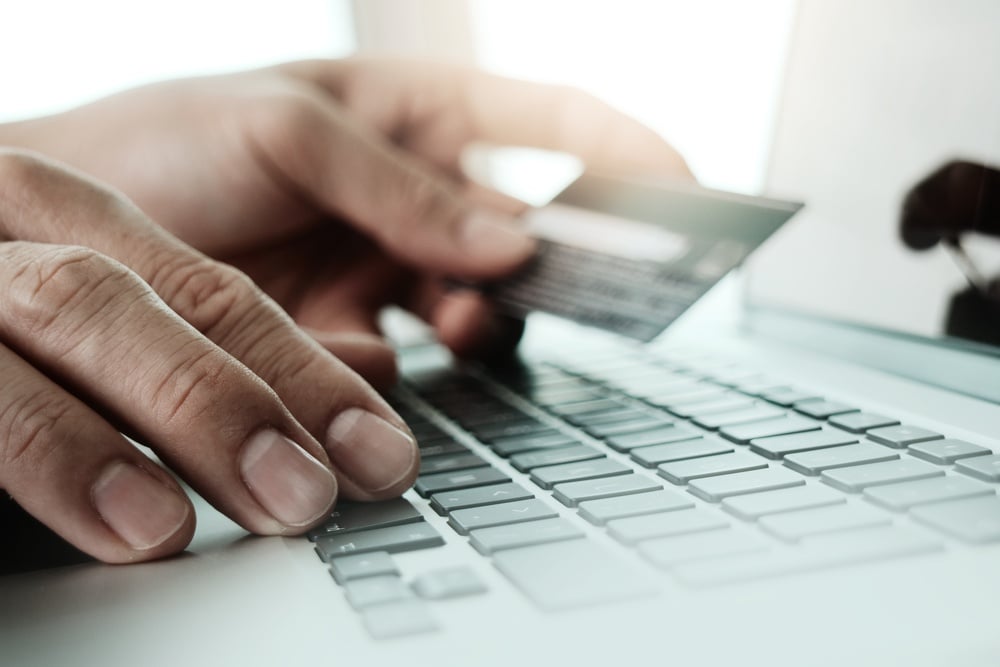If you are an Old School fan, and really who isn’t ? – you know the scene I am talking about: Will Farrell naked, and standing in the middle of the street saying to his wife “Everybody’s doing it”
That seems to me how mobile payments space is working. Drunk on the high of providing THE solution that will drive mass adoption and create a massive recurring revenue stream. Anyone and everyone seem eager to put forth the next big thing.
The frothy venture capital scene is certainly an enabler. Hundreds of millions of dollars have been poured into mobile payment investments. If projected commerce estimates are even close to accurate, by 2017 an estimated seven hundred billion dollars will be transacted via mobile platforms according to Statista.com.
You can certainly see why there is so much interest and money involved.
ApplePay, SamsungPay, GooglePay, PayPal and more are all vying for their share. But who will emerge as the dominant provider? No one knows, but one thing seems clear :
No one is winning
There are many reasons why but I believe the fundamental questions being asked are wrong.
The technology (a primer ) and distribution channels seem to be the primary considerations for all the players. The motivating questions seem to be: “What can our technology do to be safer, faster, more compliant or cooler” or “What banks or retailers can we partner with to create the largest distribution channel?”
It’s kind of Field of Dreams – “If you build it people will come.” “Let’s get our mobile payments solution out there because it’s going to be a big deal.”
The most important consideration, and whoever gets this right wins the ring — is answering the consumers question:
What pain point does using a mobile device for payments solve for the average consumer?
Think about the average person in line at their grocery store. A woman almost always carries a purse and a man a wallet. The vast majority of people carry their license and ID in some way. Producing a credit card or cash is not a burden nor does it add any significant time to that check out process.
If the mobile device also stored a “usable” license this might make a difference to many [me included]. Iowa is a state moving towards accepting an iPhone or Android device license.
If my phone could securely replace all the data pieces someone typically carries around then not carrying a wallet/purse would certainly be more likely.
Apple and Google are very smart-why not work with government DOT agencies to make this happen? Because you still have a large population that still would not see any benefit. So what’s another significant pain point?
A single interface to see all your spending and display dashboard reports would definitely appeal to consumers. Look at Mint and the many other personal finance tools to keep track of spending. Creating an easy to use interface that breaks down all purchases [think tax time] would be very attractive. There would be partnership opportunities between the mobile payment app providers and financial reporting tool applications. Think about big data opportunities. The Apples and Googles of the world know exactly when and where you spend your money, wouldn’t Target pay a lot of money to know a great deal about their shoppers and habits? Big data with spending habits create massive revenue opportunities.
Tie together family members, budgeting controls and use limits for children? Imagine mom and dad are admin users on an account that also has their children attached, two in college and one in high school. Mom and dad would ideally be able to set monthly or weekly spending limits, and better yet, be able to control what kind of establishments their children can make purchases. Real-time notifications could be enabled, spending histories charted, transfers made in real-time, and the list could go on.
Loyalty program providers have seen the same kind of adoption rate issues that plague the mobile payment space. Point of sale systems are often disparate and each presents it’s own unique challenges to loyalty programs. It also does not seem that any loyalty program has mass adoption via app download. Consumers don’t want to deal with multiple loyalty apps or programs.
The payment app with a loyalty API for plugging into seems like it will have a major advantage.
If a phone payment app has an easy to understand, and easy to redeem loyalty component offering real value to consumers, those programs can drive both usage and adoption. Here is where retail distribution channels really pays off. The retailer gains data access into their customer buying behavior never seen before. Actionable data that drives marketing, inventory, communication etc. decisions provides tremendous ROI on promoting the payment app.
The three components above are all potential drivers of adoption but I believe there needs to be one more and it seems the most obvious.
As a business when you start a new marketing campaign who does it make sense to go after first?
The low hanging fruit-the easiest, most likely to buy customers you can find.
The mobile payment space should be doing the same thing. Who benefits the most from swiping their phone? People who see paying cash or using credit cards as time consuming or who are in a hurry.
Someone in a taxi [non Uber], subway, bus. Fast food places, restaurants or any place with lines [Disney] would allow you to walk up, show your phone and boom you are done. By specifically targeting areas where the speed of the payment has a benefit to the consumer you gain adoption. When someone sees the guy in front of them use the app and quickly walk away, they start looking for that convenience.
Push marketing is very difficult when the target does not see any real need for the solution. Pull marketing via pain point alleviation or envy that someone walked through the line in 2 seconds as opposed to what took you a minute or more brings mobile payments into the consumer’s world.
Saving people time and aggravation soothes a pain point. This in turn leads to awareness and adoption.
Once you have a user base that has seen benefits you are on your way to a viable audience that can be leveraged to promote the benefits to their friends and families.
So who wins? I have no idea which solution but until technology takes a back seat to serving the consumers’ needs while providing real value, convenience and solutions I don’t see a victor.
The consumer must win first.
Stay connected with us on LinkedIn, Google +, and Twitter. For more info on how we can help, contact us and download our whitepaper, “Top 5 must haves before integrating with any Payment Gateway.”






